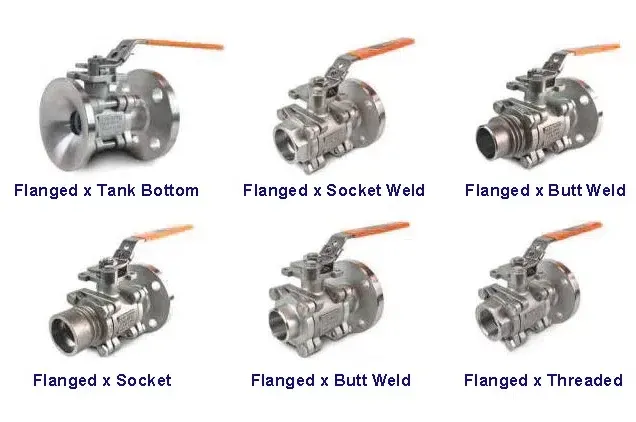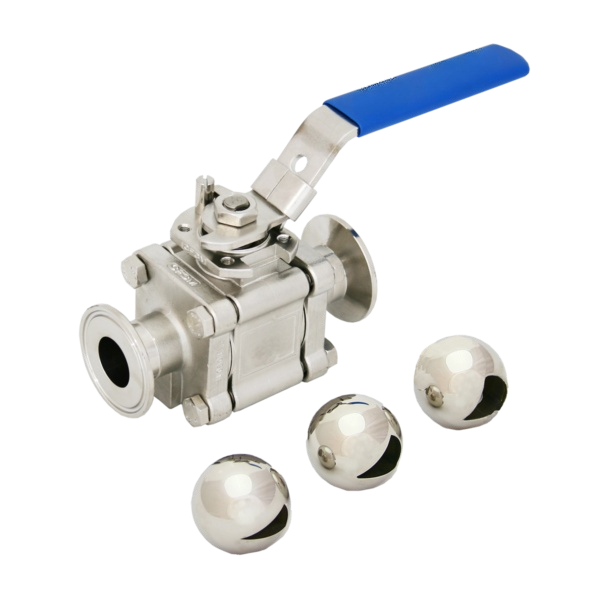What is a Ball Valve?
Ball valves are a type of valve used in various systems to control the flow of fluid or gas. By rotating a spherical disc, or "ball", that has a hole through it, the flow can be either allowed or blocked. The smooth, spherical surface of the ball provides a tight seal when the valve is closed, preventing any leakages. Moreover, due to their simple yet highly efficient design, ball valves are known for their durability and reliability, making them a popular choice in many applications.

Different Types of Ball Valves
Broadly speaking, ball valves can be categorized as standard, full port, or v-port. Each type serves a distinct purpose. This article focuses on the standard ball valve, which is the most commonly used variation. The standard ball valve owes its popularity to its flexibility in terms of compatibility with different systems and ease of installation. It features a ball that is smaller than the pipe diameter, making it a cost-effective solution for most fluid flow applications.

1. Valve Body: Typically crafted from stainless steel, brass, or cast iron, it provides structural integrity and houses ports for fluid entry and exit, encapsulating internal components securely.
2. Ball: The core component, often made of chrome-plated brass, stainless steel, or PVC, features a central bore that regulates fluid flow by rotating within the valve body.
3. Valve Stem: Links the ball to external actuators or handles, enabling smooth ball movement within the valve body.
4. Seats and Seals: Essential for creating a tight seal, preventing leaks, and crafted from materials suited to fluid type, temperature, and pressure conditions.
5. Actuator: Controls ball position via lever, handwheel, pneumatic, or electric motor, facilitating easy operation.
6. End Connections: Available in threaded, flanged, or welded options to meet diverse application requirements.
7. Bonnet: Bonnet: A protective component that encases the stem and interacts with the actuator, shielding these critical parts from potential damage.
8. Gland: A component that compresses the stem seal to ensure a secure, leak-proof connection and maintain effective sealing.
Function of a Ball Valve
A ball valve regulates the flow of fluid or gas through a piping system with high precision. It operates using a ball with a central port or hole that rotates within the valve body to either permit or obstruct flow. The ball is connected to an actuator, which can be a manual lever, electric, or pneumatic system. When open, the actuator rotates the ball to align the port with the inlet and outlet, allowing fluid or gas to pass through. When closed, the ball rotates 90 degrees to block the flow. The valve's resilient seat, typically made of Teflon, forms a tight seal against the valve body, preventing leakage.
Independent Flow Control with Ball Valves
For many applications, it's important to control the flow rate independently in different directions. Standard ball valves allow for bidirectional flow control. This is accomplished by rotating the ball, which aligns or blocks the hole with the flow, thereby controlling the flow rate in either direction.
Using Ball Valves for Supply and Exhaust
Since ball valves can control flow in both directions, they can be used for both supply and exhaust applications:
- Ball valves used for supply control the flow of fluid or gas into a system.
- Ball valves used for exhaust control the flow of fluid or gas out of a system.
Ball Valve on the Exhaust Side
For many applications, it's beneficial to control the flow on the exhaust side. This allows the system to maintain a steady pressure balance, which can improve performance and efficiency.
Ball Valve based on Pressurisation
Supply-side ball valves are often used in systems where the flow needs to be precisely controlled. These types of ball valves are common in systems with a single flow direction, such as a hydraulic cylinder, where the flow is mechanically returned (usually via a spring). They can also be used in systems with small volumes, where the 'air cushion' effect is not substantial enough.
In conclusion, ball valves stand out for their reliability and efficiency in controlling fluid and gas flow. Their simple yet effective design, along with various types catering to specific needs, makes them a preferred choice across industries. With bidirectional flow control capability, they offer versatility and optimal performance in diverse applications, enhancing system efficiency and effectiveness.

Flange x Weld Ball Valves
Different Types of Ball Valves
Broadly speaking, ball valves can be categorized as standard, full port, or v-port. Each type serves a distinct purpose. This article focuses on the standard ball valve, which is the most commonly used variation. The standard ball valve owes its popularity to its flexibility in terms of compatibility with different systems and ease of installation. It features a ball that is smaller than the pipe diameter, making it a cost-effective solution for most fluid flow applications.

V-port Ball Valve
Ball Valve Construction1. Valve Body: Typically crafted from stainless steel, brass, or cast iron, it provides structural integrity and houses ports for fluid entry and exit, encapsulating internal components securely.
2. Ball: The core component, often made of chrome-plated brass, stainless steel, or PVC, features a central bore that regulates fluid flow by rotating within the valve body.
3. Valve Stem: Links the ball to external actuators or handles, enabling smooth ball movement within the valve body.
4. Seats and Seals: Essential for creating a tight seal, preventing leaks, and crafted from materials suited to fluid type, temperature, and pressure conditions.
5. Actuator: Controls ball position via lever, handwheel, pneumatic, or electric motor, facilitating easy operation.
6. End Connections: Available in threaded, flanged, or welded options to meet diverse application requirements.
7. Bonnet: Bonnet: A protective component that encases the stem and interacts with the actuator, shielding these critical parts from potential damage.
8. Gland: A component that compresses the stem seal to ensure a secure, leak-proof connection and maintain effective sealing.
Function of a Ball Valve
A ball valve regulates the flow of fluid or gas through a piping system with high precision. It operates using a ball with a central port or hole that rotates within the valve body to either permit or obstruct flow. The ball is connected to an actuator, which can be a manual lever, electric, or pneumatic system. When open, the actuator rotates the ball to align the port with the inlet and outlet, allowing fluid or gas to pass through. When closed, the ball rotates 90 degrees to block the flow. The valve's resilient seat, typically made of Teflon, forms a tight seal against the valve body, preventing leakage.
Independent Flow Control with Ball Valves
For many applications, it's important to control the flow rate independently in different directions. Standard ball valves allow for bidirectional flow control. This is accomplished by rotating the ball, which aligns or blocks the hole with the flow, thereby controlling the flow rate in either direction.
Using Ball Valves for Supply and Exhaust
Since ball valves can control flow in both directions, they can be used for both supply and exhaust applications:
- Ball valves used for supply control the flow of fluid or gas into a system.
- Ball valves used for exhaust control the flow of fluid or gas out of a system.
Ball Valve on the Exhaust Side
For many applications, it's beneficial to control the flow on the exhaust side. This allows the system to maintain a steady pressure balance, which can improve performance and efficiency.
Ball Valve based on Pressurisation
Supply-side ball valves are often used in systems where the flow needs to be precisely controlled. These types of ball valves are common in systems with a single flow direction, such as a hydraulic cylinder, where the flow is mechanically returned (usually via a spring). They can also be used in systems with small volumes, where the 'air cushion' effect is not substantial enough.
In conclusion, ball valves stand out for their reliability and efficiency in controlling fluid and gas flow. Their simple yet effective design, along with various types catering to specific needs, makes them a preferred choice across industries. With bidirectional flow control capability, they offer versatility and optimal performance in diverse applications, enhancing system efficiency and effectiveness.

